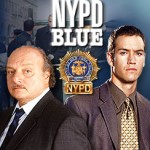 It appears the Federal Communications Commission (FCC) has done an about face with its policy towards net neutrality according to reports in the Wall Street Journal.
It appears the Federal Communications Commission (FCC) has done an about face with its policy towards net neutrality according to reports in the Wall Street Journal.
The new plan would grant Internet service providers the ability to give websites favored treatment meaning they would have priority over other sites and deliver faster service.
The catch is the ISP’s would charge such sites fees for better access. Companies like Netflix could have to pay extra fees which would give their service greater bandwidth and thus a better user experience, but I’m sure you can guess who will pick up those extra costs.
Now the new proposal under consideration would ban the outright blockage of sites that are not willing, or able to pay for the faster access, but to many internet activists, that’s not good enough. There is a fear that ending net neutrality could stifle innovation and Internet startups from competing for page views and revenue.
If a gaming company could not afford to pay for the high speed access, interest may vanish among the gamers and the company might not be able to survive. And there are also concerns that companies like Comcast, the nation’s largest provider of high-speed internet service who also owns NBC-Universal and is trying to purchase Time Warner Cable, would really limit the number of options available to consumers.
None of this has been approved and it is expected that the FCC will vote on the new rules near the end of this year, but after the January ruling by the U.S. Court of Appeals for the District of Columbia, you can be sure your surfing experience will have a new feel.











